ASHE leaders prepare for new year
The American Society for Health Care Engineering (ASHE) recently announced the results of the 2023 election for the ASHE Advisory Board, a group of volunteer leaders that collaborates to provide strategic input to the organization. In this interview, the newly elected Advisory Board members, who begin their terms in January, weigh in on their approaches to leadership and the state of the profession.
What inspired you to get involved in ASHE leadership?
Danielle Gathje: I was fortunate to have several leaders in my first year in health care who encouraged me to pursue a career in facilities, supported me in obtaining education and mentored me as I navigated through my development as a facilities leader. While it is difficult to sum up the appreciation I feel for them, their influence has been profound. Joining ASHE so early in my career allowed me to connect with various associate and professional members who influenced me to get involved. As my career has evolved, I have been honored with opportunities to sit on local boards and ASHE committees, speak at conferences and now serve on the ASHE Advisory Board.
The new ASHE Advisory Board members
The American Society for Health Care Engineering Advisory Board comprises nine regional representatives and two associate members elected to two-year terms, plus a president-elect who assumes the title of president in the second year of their two-year term. Half of the Advisory Board’s representative seats are up for election each year; the newest class of ASHE Advisory Board members took part in this interview:
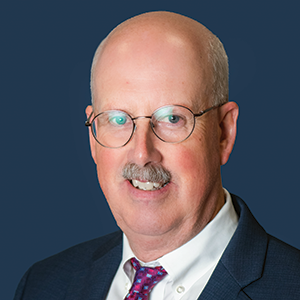
President-elect: Michael Hatton, MBA, CHFM, FASHE, vice president of facilities engineering and construction at Memorial Hermann Health System, Houston

Region 3 Representative (second term): Dennis Ford, MHA, CHFM, CHC, FASHE, director of corporate facilities operations at Atrium Health, Charlotte, N.C.
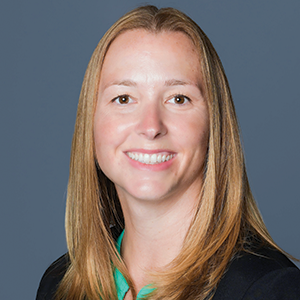
Region 6 Representative (second term): Danielle Gathje, MBA, CHFM, SASHE, vice president of hospital operations at M Health Fairview – St. John’s Hospital, Maplewood, Minn.
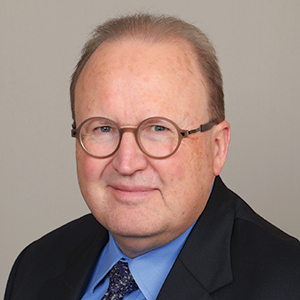
Region 7 Representative: John Wilson, CHFM, SASHE, AIA, director of planning, design and construction at Parkland Health, Dallas
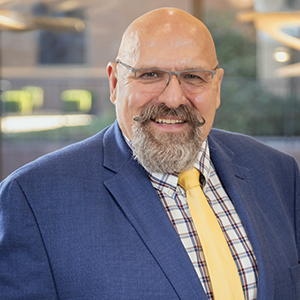
Region 8 Representative: Rick Sanders, BSOM, CHFM, CHEP, USN (Ret.), director of facilities, clinical engineering, security and designated safety officer at Poplar Bluff Regional Medical Center, Poplar Bluff, Mo.
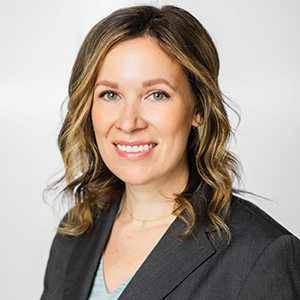
Region 10 Representative (second term): Kathryn Quinn, MHS, CHSP, SASHE, safety officer at Saint Alphonsus Health System, Boise, Idaho
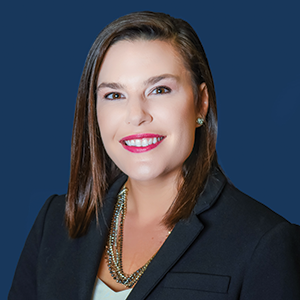
Associate Member Representative (second term): Lindsey Brackett, CHFM, CHC, CHOP, SASHE, chief empowerment officer at Legacy FM LLC, Phoenix.
Rick Sanders: Throughout my 21-year Navy career, it was instilled into us that we should be training our replacements. I would make myself available to those who were interested in enhancing their careers, and I would keep an eye out for those who displayed potential for future leadership. When I made the transition to health care engineering, I continued to believe that we, as seasoned tradespeople and leaders, should pass along our knowledge and experiences and encourage those who choose the facilities management profession, especially health care facilities management. I have so many to thank for their interest in helping me to achieve my successes.
What unique professional experience or insight are you most excited to bring to the ASHE Advisory Board?
Michael Hatton: My facilites management career began many years ago when I took an entry-level operations and maintenance job with real estate developer Gerald D. Hines as an apprentice stationary engineer. I first got into health care when Hines developed a medical office building and surgical center in the Texas Medical Center, where I was named chief engineer. From there, I migrated into the acute side of health care. So, my diverse background in building systems, property management, central plant operations, energy management, construction and renovation, plus many other support services leadership duties, cover the range of what the modern facilities manager does every day. In fact, I still actively keep and maintain two of my skilled trade licenses — I put a lot of work into securing them!
John Wilson: For over 30 years, I have managed the design and implementation of health care capital construction projects. From my humble beginnings as a planning technician at Hendrick Medical Center in Abilene, Texas, to a once-in-a-lifetime opportunity to help manage the $1.3 billion campus replacement for Parkland Health, I’ve worked with the full range of project stakeholders, from field technicians to hospital executives. This gives me a unique perspective on the ASHE strategic focus on capital planning.
Dennis Ford: I am passionate about the participation of facilities management in planning, design and construction (PDC) efforts and the transition from construction to maintenance to promote fully commissioned “survey-ready day one” projects. ASHE serves both health care facilities managers and PDC professionals, and we should do more to better unite these groups where project decisions are evaluated based on risk to clinical operations, in addition to risk to scope, schedule and budget. Our biggest challenge is ensuring projects meet individual health system facility design standards, exceed code minimums and are built to mitigate risks and prolong the life of building systems and infrastructure.
Which challenges facing ASHE members are top of mind for you?
Lindsey Brackett: Critical challenges confronting ASHE members include ongoing struggles with code reformation and adoption, aging infrastructure and skilled labor shortages. Members also grapple with allocating capital to meet competing needs and integrating progressive technology into health care facilities. Our reality demands innovative strategies to achieve more with fewer resources, even as these common challenges persist. Patient safety and care must remain at the forefront of ASHE’s priorities. Any challenges that hinder these essential objectives should be promptly resolved. Our field should continue to innovate toward flexible and resilient physical environments supported by technology that lightens the load on front-line staff.
Kathryn Quinn: It is no mystery that many are struggling with staffing for a variety of reasons. Training resources are critical to building and sustaining a solid facilities team during times of turnover or new leadership. ASHE has a wealth of training resources that are applicable to new hires through those pursuing their Certified Healthcare Facility Manager (CHFM) certification and other credentials. Whenever I meet a new leader, I make sure they know exactly where to access this vital information.
Michael Hatton: Our challenges today include how to keep ASHE relevant to the new generation, as well as recruiting and retaining new members and populating the ASHE leadership pipeline to sustain the organization into the future. Networking and education have changed for younger generations. ASHE has to ensure it remains the premier organization for those of the social media and online demographic; it particularly needs growth among health care facilities managers and associated roles.
How do you see innovation playing a role in meeting those challenges?
Danielle Gathje: Interestingly, although innovation is a current buzzword, health care facilities leaders have been doing this for decades. ASHE members are constantly challenging themselves to improve and find solutions to everyday dilemmas. The innovation journey, however, must now tackle harder and larger challenges. We must set aside time to research, connect and explore what others are doing or think creatively to support those who are actively generating innovative solutions to common and challenging problems. We must dust off the old and evaluate new ways to better serve our teams and patients today. We are all challenged every day and overloaded by the sheer volume of our to-do lists; however, when we engage our teams and each other, there are always ways that we can incrementally improve.
Rick Sanders: So many known and unknown challenges lie ahead for health care facilities management. Technology continues to evolve, and there is so much information that needs to be processed. Educational technology can help skilled trades leadership better understand, maintain and operate the equipment. Video accessibility to meetings and conferences enables leaders with limited time to attend without traveling. Over the past five years, I have witnessed innovations in construction, monitoring operations and streamlining administrative functions. As leaders, we need to embrace a fast pace, analyze how technology can help us fulfill our responsibilities more successfully and be ready to make changes in the way we do business.
Lindsey Brackett: Innovation is a multifaceted concept that extends beyond technology. It encompasses processes, behaviors, work culture and diverse perspectives. Innovation within ASHE isn’t just about adopting cutting-edge technologies; it’s about creating an environment that encourages creativity, adaptability and the exploration of new solutions. By promoting a culture of learning and collaboration, we can address the challenges facing our members with a forward-thinking approach that embraces change and improvement. Through these efforts, ASHE can lead the way in transforming health care facilities management and remain at the forefront of our field’s evolution by empowering our members to meet the challenges ahead with confidence and ingenuity.
What’s something you’d like ASHE members to know about you as you begin your new term on the Advisory Board?
Dennis Ford: I am excited by ASHE’s renewed focus on innovation. This profession involves juggling many areas of responsibility; in the field, it is difficult to stop and focus on any one area without dropping a ball or two. ASHE is diving deep into each area, providing industry-leading prospectives, defining basic requirements and best practices and providing practical tools for each area of responsibility. We do this while maintaining a strong advocacy presence in all regulatory areas affecting health care facilities and national trends such as sustainability. This is a huge task that takes time, and I thank the members for trusting the Advisory Board to do it justice.
John Wilson: I would want our members to know that they elected a servant leader. Having been in a director position for over 12 years, I’ve found that the success of the team requires the support, trust and inspiration of the leader, not the authority or control. I’m deeply honored for the opportunity to serve ASHE in this position and will always prioritize the needs of the members over my own.
Kathryn Quinn: The ASHE membership group is diverse, and member input is invaluable to ensuring ASHE has a pulse on the issues facing health care facilities teams. I highly encourage ASHE members to actively participate at any level they can. Stay up to date by reading Health Facilities Management magazine (and get your continuing education credits), pursue your CHFM certification, present at a state chapter conference and volunteer on an ASHE committee. There are many opportunities to be engaged.
Landon Hegedus is assistant editor of Health Facilities Management magazine.

